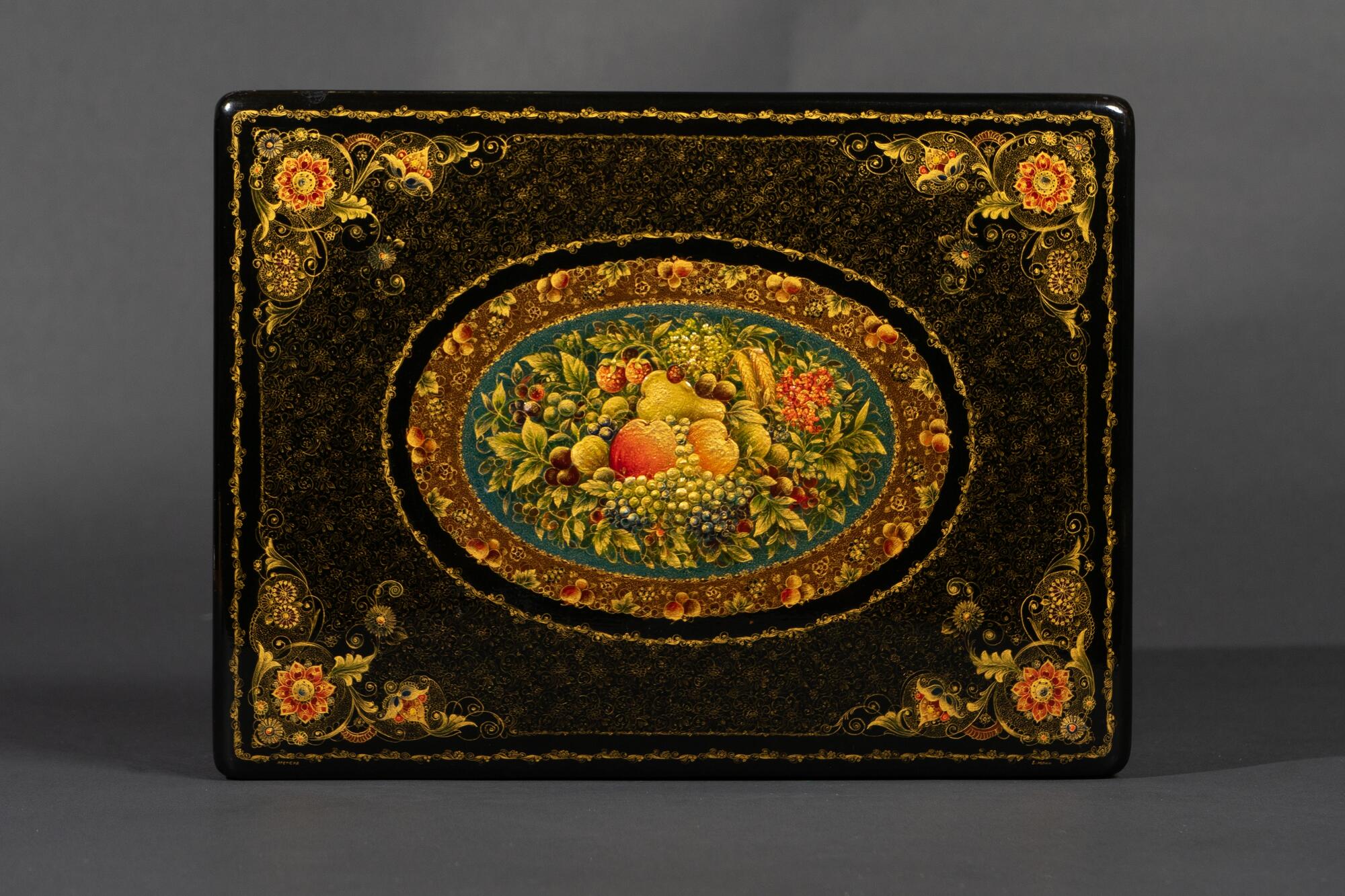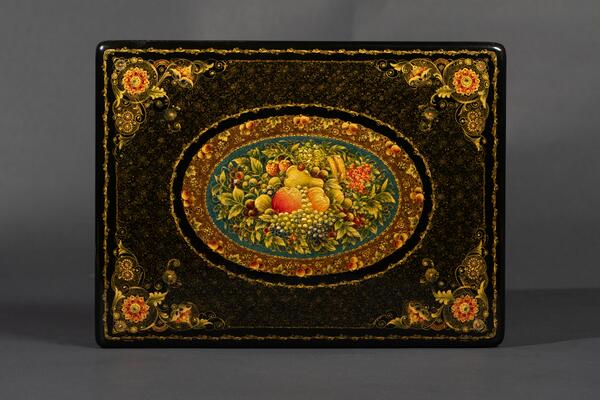Evgeny Yurin is known as the pioneer of the ornamental movement in Mstyora lacquer miniature. He developed an original style that went down in the craft’s history as the “Yurin ornament”: the artist painted compositions based on traditional Old Russian patterns used for coining, wood carving, folk embroidery, woodblock printed floral ornaments on scarves and calico.
The master began his career as an icon painter and achieved high mastery in this field: he was able to imitate almost any style of Old Russian icon painting and mastered all the subtleties of pre-face painting (“dolichnoe pismo” in Russian). Often when creating an icon, different masters paint different fragments: a face-painter (“lichnik” in Russian from “liko” — “face”) paints faces of saints and open areas of the body, while a dolichnik — everything that needs to be painted before the face: clothes, landscape, architecture.
His first experiments in lacquer miniature began in the early 1930s. At first, the artist created murals following icon painting traditions, but soon proved himself as an innovator: since the mid-1930s, he painted still lifes and framed them with elegant ornaments using gold powder. In the 1950s, he tried to combine ornamental compositions with stylized and realistically painted plants.
The miniature “Fruit and Ornament” is a mature work of the master, it was created in 1954. The author built the composition according to his characteristic “plafond” principle. In the center of the lid, in an oval on a colored background, he captured fruits and berries — it seems as if they lie on a tray with a decoratively painted surface. One can recognize in this ornament the influence of Zhostovo painting. This Russian folk craft, which originated in the village of Zhostovo and surrounding areas, is known for depictions of flower arrangements on metal trays with a dark background.
In the corners of the lid, the master created patterns of stylized flowers, leaves and herbs. He covered the rest of the lid space with very thin curls and conventionally painted outlines of flowers: they form an openwork grid, from under which the black lacquer background shines through. The combination of this pattern and the depth of the lacquer layers creates a flickering effect. By combining different elements of the ornament — large and small, dense and sparse — the artist managed to preserve the stylistic unity of all parts of the painting.
The master began his career as an icon painter and achieved high mastery in this field: he was able to imitate almost any style of Old Russian icon painting and mastered all the subtleties of pre-face painting (“dolichnoe pismo” in Russian). Often when creating an icon, different masters paint different fragments: a face-painter (“lichnik” in Russian from “liko” — “face”) paints faces of saints and open areas of the body, while a dolichnik — everything that needs to be painted before the face: clothes, landscape, architecture.
His first experiments in lacquer miniature began in the early 1930s. At first, the artist created murals following icon painting traditions, but soon proved himself as an innovator: since the mid-1930s, he painted still lifes and framed them with elegant ornaments using gold powder. In the 1950s, he tried to combine ornamental compositions with stylized and realistically painted plants.
The miniature “Fruit and Ornament” is a mature work of the master, it was created in 1954. The author built the composition according to his characteristic “plafond” principle. In the center of the lid, in an oval on a colored background, he captured fruits and berries — it seems as if they lie on a tray with a decoratively painted surface. One can recognize in this ornament the influence of Zhostovo painting. This Russian folk craft, which originated in the village of Zhostovo and surrounding areas, is known for depictions of flower arrangements on metal trays with a dark background.
In the corners of the lid, the master created patterns of stylized flowers, leaves and herbs. He covered the rest of the lid space with very thin curls and conventionally painted outlines of flowers: they form an openwork grid, from under which the black lacquer background shines through. The combination of this pattern and the depth of the lacquer layers creates a flickering effect. By combining different elements of the ornament — large and small, dense and sparse — the artist managed to preserve the stylistic unity of all parts of the painting.





